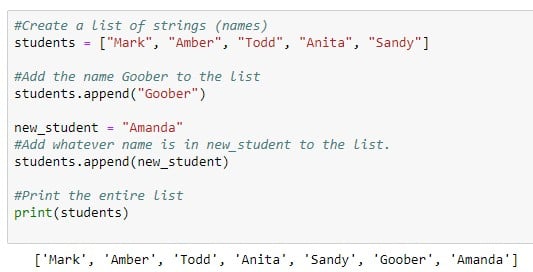

Return self.getValues() + ", " + self.num_doors Print("Invetory Unit: Car \n Make: " + self.make + "\n Model: " + self.model + "\n Year " + self.year + "\n Miles " + self.mileage + " \n Price :" + self.price)ĭef _init_(self, Make, Model,Year,Mileage,Price,num_doors): Return self.make + " " + self.model + " " + self.year + " " + self.mileage + " " + self.price print the vehicles_list instead, it contains all Car objects you have made.ĭef _init_(self, make, model, year, mileage, price): Print(car.getValus()) # car is undefined. Each Car object is an element of the list # adding unnamed instances of the class Car to a list. # are you making names unique here? if so, they are in a different namespace so don't have to be different NewCar = input('Add another car? (Y/N) ') Print("Invetory Unit: Car \n Make: "+ self.Makename + "\n Model: " + self.Modelname+ "\n Year " + self.Yearr+"\n Miles " + self.Mileagenw+" \n Price :" + self.Pricenw+" \n Number of doors :" + self.numofdoorsnw) The implementation was adapted from Tim Peterss list sort for Python. Return self.getValus() + ", " + self.numofdoorsnw The List interface provides two methods to efficiently insert and remove multiple. Vehicle._init_(self,Make, Model,Year,Mileage,Price) Print("Invetory Unit: Car \n Make: "+ self.Makename + "\n Model: " + self.Modelname+ "\n Year " + self.Yearr+"\n Miles " + self.Mileagenw+" \n Price :" + self.Pricenw)ĭef _init_(self, Make, Model,Year,Mileage,Price,numofdoors): Return self.Makename + " " + self.Modelname+ " " + self.Yearr+" " + self.Mileagenw+" " + self.Pricenw Add the elements of tropical to thislist: thislist 'apple', 'banana', 'cherry' tropical 'mango', 'pineapple', 'papaya' thislist. Anybody got any ideas how I can get on track with this? class Vehicle:ĭef _init_(self, Make, Model, Year, Mileage, Price): index () Returns the index of the first element with the specified value. extend () Add the elements of a list (or any iterable), to the end of the current list. We can appropriate method for deletion based on what information we have about the item to be deleted. count () Returns the number of elements with the specified value. To remove an item from the list, use one of the four methods. charList 'a', 'b', 'c' x len (charList) print (x) 3 8.

I think I am using the Car Class / Vehicle Class wrong. Use the len() function to find the length or size of a given List. I am probably doing several mistakes here, but the error message I get now is "NameError: name 'car' is not defined". I am writing av program where a user can add cars to an existing list of cars. In this tutorial, we will learn about the Python append() method in detail with the help of. Covering popular subjects like HTML, CSS, JavaScript, Python, SQL, Java, and many, many more.

#PYTHON ADD TO LIST FREE#
I am new to Classes and hope someone can help me out. The append() method adds an item to the end of the list. W3Schools offers free online tutorials, references and exercises in all the major languages of the web.


 0 kommentar(er)
0 kommentar(er)
